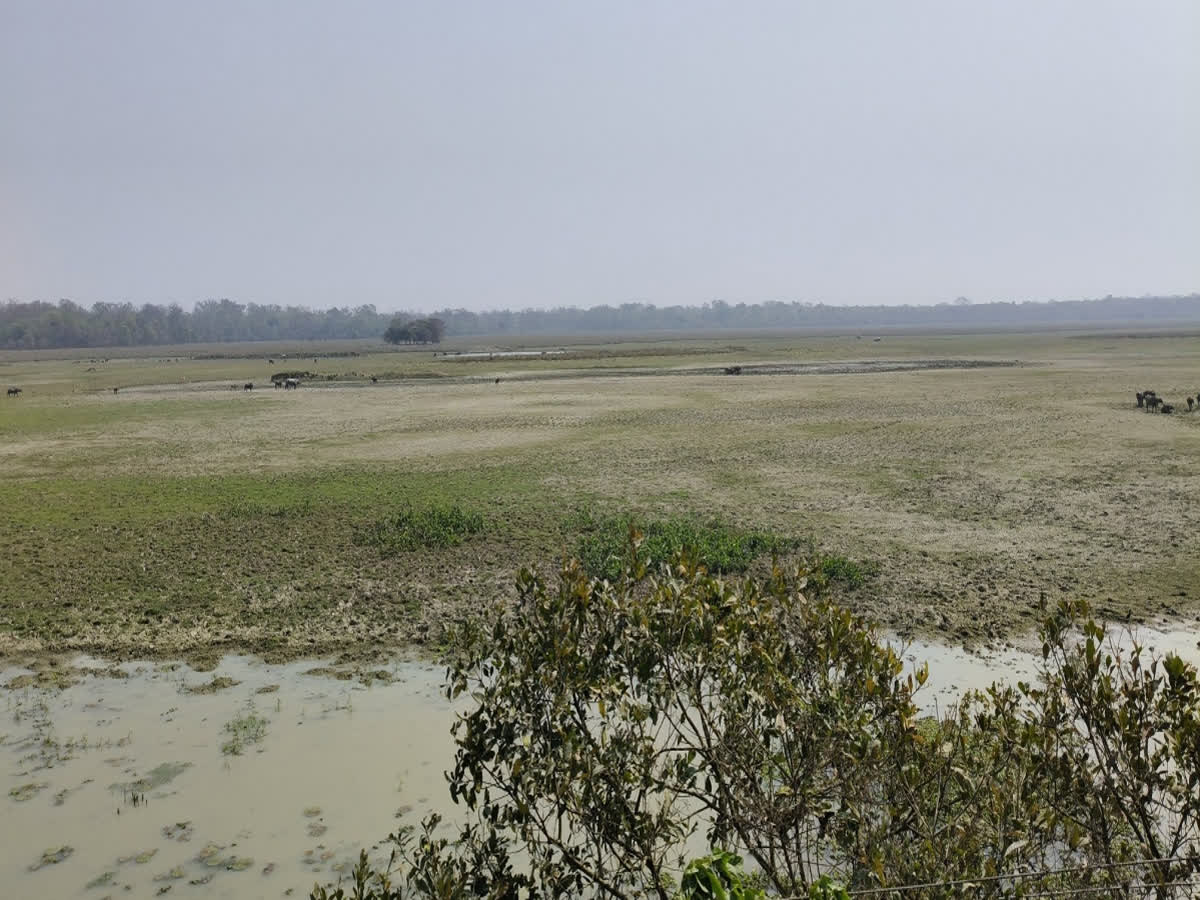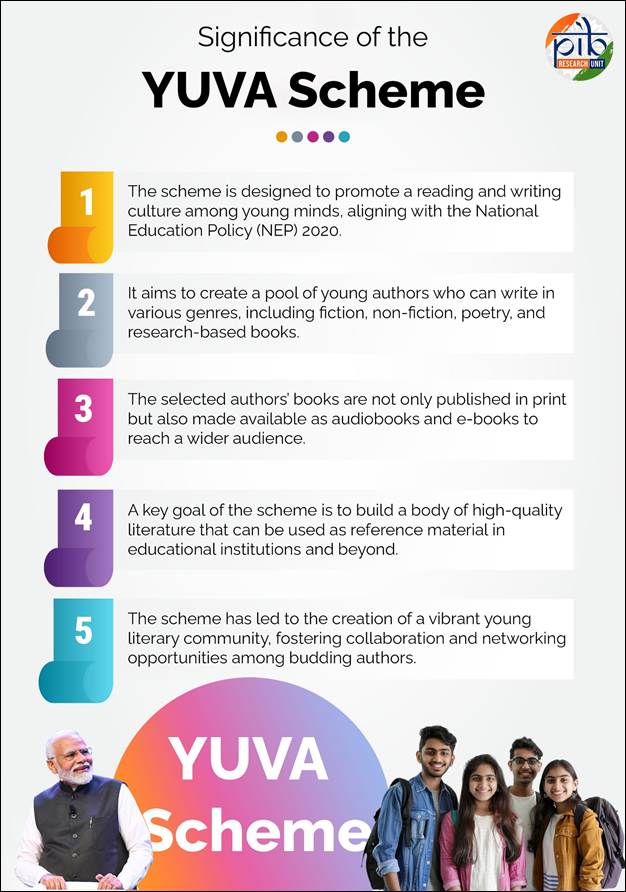Pobitora Wildlife Sanctuary

- 15 Mar 2025
In News:
Pobitora Wildlife Sanctuary, located in Assam, is renowned for its high density of the Great Indian One-Horned Rhinoceros and diverse biodiversity. The sanctuary, covering 38.85 km², is facing a growing concern as one of its major wetlands, TamulidobaBeel, is drying up. This situation underscores the urgent need for habitat management to protect the sanctuary's wildlife.
About Pobitora Wildlife Sanctuary:
- Location: Located within 30 km of Guwahati, Assam, it was established in 1998 and spans 48.81 km².
- Fauna: Famous for its rhino population, the sanctuary also houses leopards, wild boars, barking deer, wild buffaloes, and over 2,000 migratory birds.
- Flora: The sanctuary is dominated by wet savannah and marshland, though the invasive water hyacinth is a significant problem, especially for waterfowl.
TamulidobaBeel: A Crucial Wetland
- Role: A key water body within the sanctuary, TamulidobaBeel is vital for rhinos, water buffaloes, and migratory birds.
- Drying Concern: Experts and locals have observed the early drying up of the Beel, a trend that has worsened over the past few years. Migratory birds have already abandoned the wetland earlier than expected, signaling a broader ecological imbalance.
Factors Contributing to Drying of the Wetland:
- Siltation: The deposition of silt has significantly reduced water retention in the Beel.
- Climate Change: Predictions of a hotter weather season (March-May 2025) by the India Meteorological Department suggest further strain on the sanctuary's water resources, affecting biodiversity.
Ecological Implications:
- Rhino Habitat Impact: About 20-25 rhinos are regularly found near TamulidobaBeel. The drying of this wetland increases water scarcity in their core habitat, risking human-animal conflicts as rhinos may stray outside the sanctuary.
- Bird Migration: The Beel also serves as a migratory bird hub, particularly in winter. Early drying may disrupt migration patterns, affecting bird populations.
Government Response and Measures:
- Desilting Efforts: The Forest Department has taken proactive measures, including desilting the Beel to restore water levels and maintain its ecological functions.
- Expert Consultations: Collaborations with institutions like IIT Guwahati are underway to assess and manage the wetland restoration scientifically.
- Long-term Plans: Restoration efforts are focused on improving water retention and managing silt deposition, alongside broader habitat management initiatives.
Expert Recommendations:
- Experts emphasized the critical need for scientific habitat management and stressed the importance of restoring wetlands to ensure the sanctuary's long-term ecological balance.
- The government must focus on sustainable habitat conservation and water management strategies to protect species, especially the rhinos.
PM-YUVA 3.0: Mentoring Young Authors Scheme (2025)

- 15 Mar 2025
In News:
Recently, the Ministry of Education, Department of Higher Education, launched the third edition of the Prime Minister’s Scheme for Mentoring Young Authors (PM-YUVA 3.0). The scheme is a part of India’s broader efforts to cultivate literary talent among youth and promote a vibrant reading and writing culture.
About PM-YUVA Scheme:
- Launched by: Ministry of Education, Government of India
- Implementing Agency: National Book Trust (NBT), India
- Target Group: Young authors below 30 years of age
- Launch Date: March 11, 2025
- Application Window: March 11 to April 10, 2025, via MyGov portal
- Number of Authors Selected: 50
- Eligibility: Applicants of PM-YUVA 1.0 and 2.0 are not eligible
Objectives:
- To mentor young writers and encourage storytelling in Indian languages and English
- To promote a book culture, literacy, and intellectual engagement among youth
- To reflect Indian heritage, knowledge systems, and contemporary progress through literature
Themes for PM-YUVA 3.0:
- Contribution of Indian Diaspora in Nation Building
- Indian Knowledge System (IKS)
- Makers of Modern India (1950–2025)
Mentorship and Publishing:
- Selected authors will undergo training from June 30 to December 30, 2025, under the guidance of eminent mentors
- Books authored during the programme will be published by NBT and translated into Indian languages to promote Ek Bharat Shreshtha Bharat
- Authors will participate in literary festivals and gain exposure to the publishing world
Financial Support and Recognition:
- Scholarship: ?50,000 per month for 6 months (Total ?3 lakh per author)
- Royalty: 10% on successful publication of books
- Platform: Authors will receive national-level exposure for promoting their books and themes
Background:
- PM-YUVA 1.0 (2021): Focused on India’s freedom struggle and unsung heroes
- PM-YUVA 2.0 (2022): Highlighted democracy and constitutional values
- PM-YUVA 3.0 (2025): Explores diaspora, knowledge systems, and nation-building post-independence
Significanc:
- Aligns with NEP 2020 goals of holistic development and youth empowerment
- Encourages intellectual and cultural contributions by the youth
- Promotes awareness of India’s diaspora and indigenous knowledge systems
Raisina Dialogue 2025
- 15 Mar 2025
In News:
The 10th edition of the Raisina Dialogue, India’s premier conference on geopolitics and geo-economics, is scheduled to be held in New Delhi from March 17–19, 2025.
About Raisina Dialogue:
- Launched: 2016
- Organisers: Observer Research Foundation (ORF) in collaboration with the Ministry of External Affairs, Government of India
- Format: Multi-stakeholder, cross-sectoral conference bringing together global leaders in politics, business, media, academia, and civil society
- Modelled On: Munich Security Conference (Germany) and Shangri-La Dialogue (Singapore)
- Annual Venue: New Delhi
- 2025 Theme: Kalachakra: People. Peace. Planet.
Significance for India and the World:
- Provides a platform for dialogue on global strategic and security issues
- Enhances India’s image as a thought leader in international diplomacy
- Fosters multilateral cooperation on contemporary global challenges such as conflict resolution, climate change, technological disruption, and global governance
- Reflects India’s growing role as a bridge between the Global North and Global South
World Air Quality Report 2024
- 15 Mar 2025
In News:
India remains among the world’s most polluted countries despite slight improvements in air quality.
Published by: IQAir (Swiss Air Quality Technology Firm)
Key Findings:
- India’s Global Rank: 5th most polluted country in 2024 (improved from 3rd in 2023).
- Average PM2.5 Level (India): 50.6 µg/m³ in 2024 — 10 times higher than the WHO guideline of 5 µg/m³.
- Top Polluted Cities:
- Byrnihat (Assam-Meghalaya border) — most polluted city globally with PM2.5 at 128.2 µg/m³.
- Delhi — most polluted capital city globally with PM2.5 at 91.6 µg/m³.
- 13 of the world’s 20 most polluted cities are in India, including Mullanpur, Faridabad, Gurugram, Bhiwadi, Noida, and Ganganagar.
- Northern India: Faces severe pollution due to crop stubble burning (contributes ~60% of PM2.5 levels).
- Global Air Quality: 91% of countries exceeded WHO PM2.5 safe limits; only 12 countries met the recommended levels.
Major Sources of PM2.5 Pollution:
- Vehicular emissions
- Industrial discharges
- Biomass burning (e.g., firewood, crop residue)
Health & Environmental Impact:
- Health: Linked to respiratory and cardiovascular diseases, cancers; reduces life expectancy by ~5.2 years in India.
- Annual Death Toll: ~1.5 million deaths in India linked to PM2.5 exposure (2009–2019, Lancet Study).
- WHO: 99% of the world’s population breathes polluted air.
India’s Measures to Combat Air Pollution:
Initiative Description
NCAP (2019) - Aims to reduce PM levels by 20–30% in non-attainment cities by
2026. Focuses on monitoring, emissions control, public awareness.
BS-VI Emission Standards - Implemented in 2020 for vehicles to reduce vehicular pollution.
FAME Scheme - Promotes electric and hybrid vehicles to cut down transport-related emissions.
PM Ujjwala Yojana - Provides LPG connections to reduce indoor air pollution from biomass.
GRIHA - Encourages eco-friendly construction practices.
GRAP - Emergency action plan in Delhi-NCR during high pollution episodes.
Commission for Air Quality Management - Coordinates air quality actions across NCR and
nearby areas.
Public Transport & Regulation - Expanding metro/bus networks, penalising high-emission vehicles.
Way Forward:
- Strengthen enforcement of emission norms for vehicles and industries.
- Promote LPG usage over biomass for cooking, especially among rural poor.
- Increase public transport options and incentivise clean technologies.
- Raise awareness and improve inter-state coordination on stubble burning.
Uniyalakeralensis
- 15 Mar 2025
In News:
Researchers have confirmed the discovery of a new flowering plant species named Uniyalakeralensis (family: Asteraceae) in the Agasthyamala Biosphere Reserve (ABR), located in the southern Western Ghats of Kerala. Endemic to southwest India, the species is named in honour of the state of Kerala.
Key Features:
- Plant Type: Dense shrub with light purple flowers, growing 1–3 metres tall.
- Distinctive Traits: Larger leaves, longer petioles (leaf stalks), and fewer lateral veins compared to related species like U. comorinensis and U. salviifolia.
- Flowering & Fruiting Period: August to April.
- Habitat: Open areas on western mountain slopes of ABR, at elevations between 700–1,400 metres.
- Distribution: Around 5,000 individuals across four subpopulations, covering an estimated area of 250 km².
- IUCN Status (2024): Data Deficient (DD) due to limited information on long-term population trends.
The plant was first collected in 1998 and initially misidentified as Vernonia multibracteata. Later taxonomic revisions led to the recognition of Uniyala as a separate genus, named after botanist B.P. Uniyal, with this species formally described as new.
About Agasthyamala Biosphere Reserve (ABR):
- Location: Spans parts of Kerala and Tamil Nadu in the southern Western Ghats.
- UNESCO Status: Recognized under the Man and the Biosphere (MAB) Programme in 2016.
- Biodiversity Highlights: Home to over 2,254 higher plant species, including 405 endemics; key fauna includesNilgiriTahr, Lion-tailed Macaque, Bengal Tiger, and Indian Elephant.
- Indigenous Communities: Inhabited by the Kani tribes in both states.
